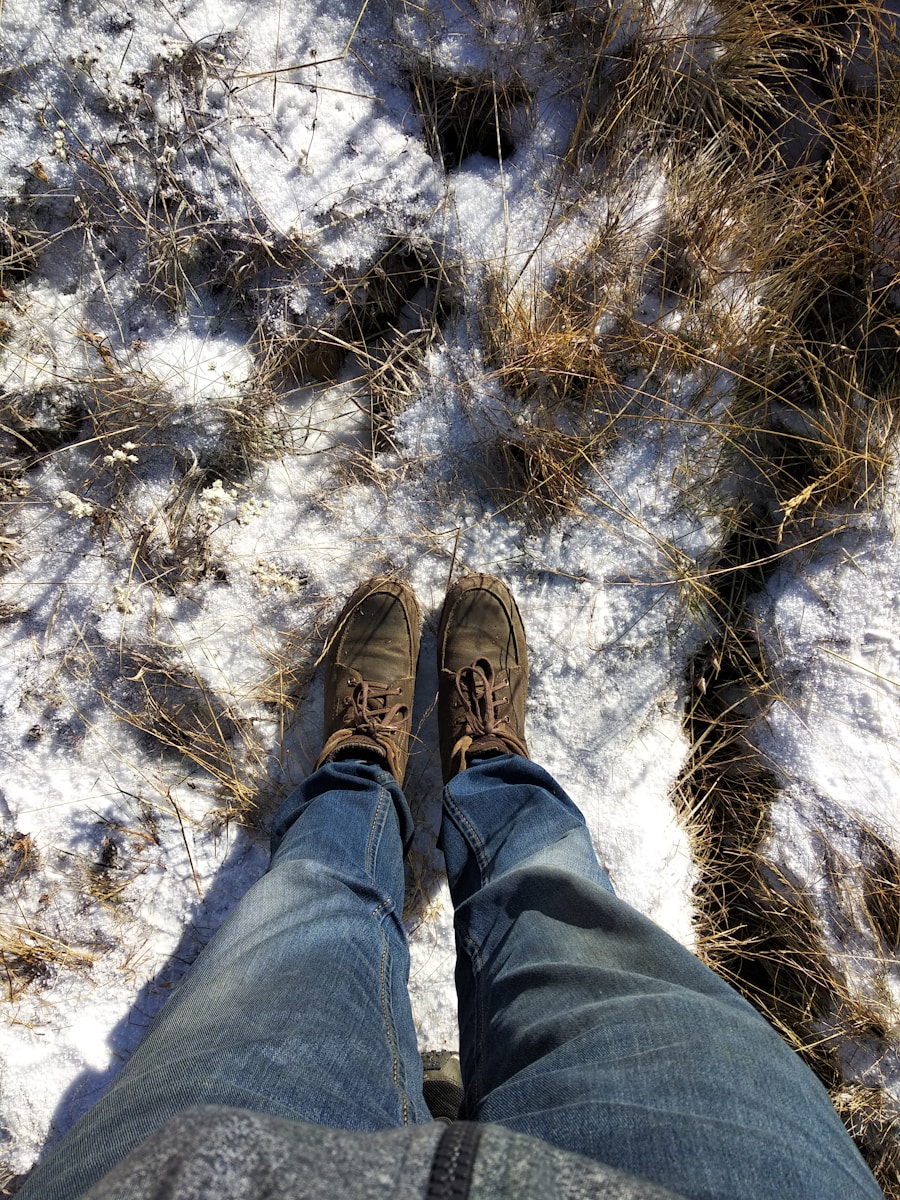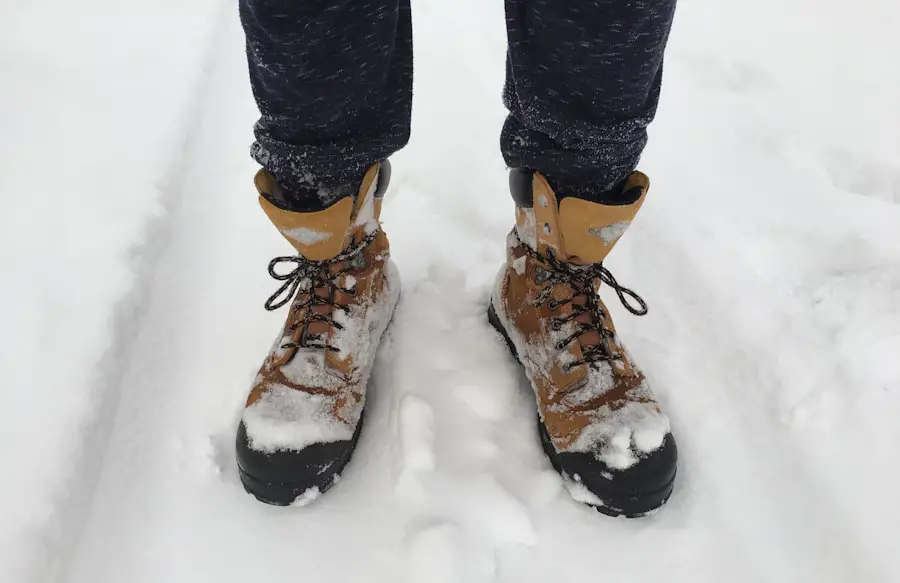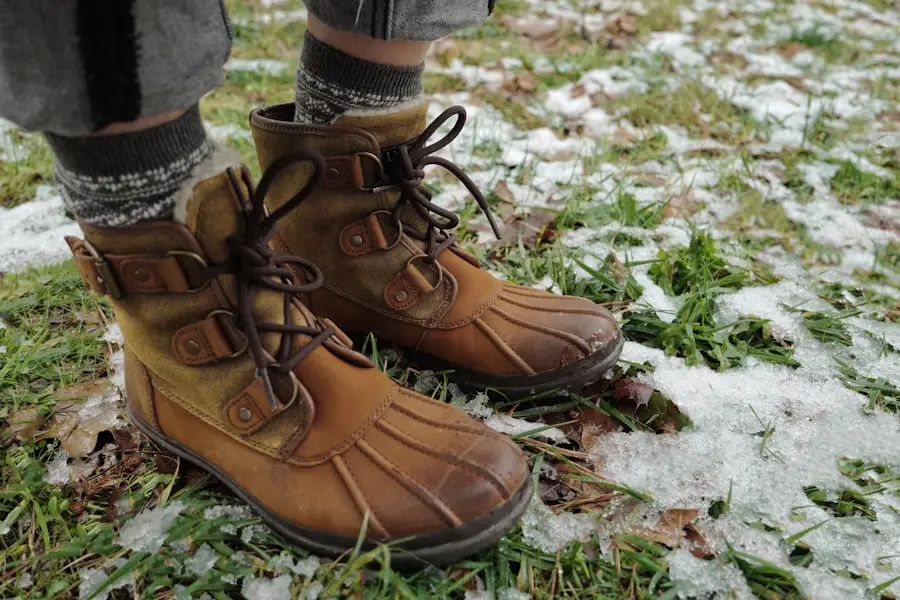When it comes to hiking, the right gear can make all the difference, and at the forefront of that gear is a good pair of hiking boots. Proper fit is paramount, as it directly influences comfort, performance, and safety on the trail. A well-fitted boot provides the necessary support for your feet, helping to prevent injuries such as blisters, calluses, and even more severe issues like sprains or fractures.
The terrain can be unpredictable, and having boots that fit correctly allows for better stability and control, which is essential when navigating rocky paths or steep inclines. Moreover, the psychological aspect of wearing well-fitted boots cannot be overlooked. When your feet are comfortable and secure, you can focus on the beauty of nature around you rather than the discomfort of your footwear.
This mental clarity can enhance your overall hiking experience, allowing you to enjoy the journey rather than endure it. Therefore, investing time in finding the right fit is not just a matter of physical comfort; it’s also about enhancing your enjoyment and connection with the outdoors.
Key Takeaways
- Proper fit is crucial for hiking boots to ensure comfort and prevent injuries
- Factors to consider when choosing hiking boots include terrain, weather, and personal preferences
- Hiking boots should be snug but not too tight, with enough room for the toes to wiggle
- Signs of a poor fit include blisters, hot spots, and discomfort while walking
- Tips for finding the right fit include trying on boots in the afternoon, wearing hiking socks, and walking around the store to test comfort
Factors to Consider When Choosing Hiking Boots
Choosing the right hiking boots involves several critical factors that go beyond mere aesthetics or brand loyalty. One of the most significant considerations is the type of terrain you plan to hike. For instance, if you’re tackling rugged mountain trails, you’ll need boots with a stiffer sole for better support and traction.
Conversely, if your hikes are primarily on well-maintained paths, a lighter boot may suffice. Additionally, the climate plays a crucial role; waterproof boots are essential for wet conditions, while breathable materials are preferable for warmer climates. Another important factor is the type of hiking you intend to do.
Day hikes may require different footwear than multi-day backpacking trips. For longer excursions where you’ll be carrying a heavier load, boots with added ankle support and cushioning are advisable. Furthermore, consider your foot shape and any specific needs you may have, such as arch support or room for orthotics.
Each person’s foot is unique, and understanding your own anatomy can guide you toward a boot that will accommodate your specific requirements.
How Tight Should Hiking Boots Be?

Determining how tight hiking boots should be is a nuanced process that requires careful consideration. Ideally, your boots should feel snug but not painfully tight. A good rule of thumb is to ensure that there is about a thumb’s width of space between your longest toe and the front of the boot when standing upright.
This space allows for natural foot movement during descents when your feet may slide forward in the boot. However, when you flex your foot or squat down, your toes should not touch the front of the boot. Additionally, the heel should fit securely without lifting or slipping as you walk.
A secure heel helps prevent blisters and provides better control over uneven terrain. It’s also essential to consider how the boot feels when laced up; it should provide adequate support without constricting blood flow. If you find yourself adjusting your laces frequently or feeling discomfort in any area, it may be an indication that the fit is not quite right.
Signs of a Poor Fit
| Signs of a Poor Fit | Metrics |
|---|---|
| High Turnover Rate | 20% of employees leaving within the first year |
| Low Employee Engagement | Survey results showing less than 50% of employees feel engaged |
| Decreased Productivity | 10% decrease in overall team productivity compared to previous year |
| Increased Absenteeism | 20% increase in employee absenteeism over the last 6 months |
Recognizing the signs of a poor fit is crucial for maintaining foot health during hikes. One of the most common indicators is discomfort or pain in specific areas of the foot, such as the toes, arches, or heels. If you experience pinching or excessive pressure points while trying on boots, it’s likely that they are not suitable for your foot shape.
Blisters are another telltale sign; if you find yourself developing blisters after short walks in new boots, this could indicate that they are either too tight or too loose. Additionally, if you notice excessive movement within the boot while walking—such as your heel lifting or your foot sliding around—this can lead to instability and increase the risk of injury. A poor fit can also manifest in fatigue; if your feet feel unusually tired after a hike, it may be due to inadequate support or improper sizing.
Paying attention to these signs can help you avoid discomfort and potential injuries on the trail.
Tips for Finding the Right Fit
Finding the right fit for hiking boots requires a combination of knowledge and patience. Start by measuring your feet at the end of the day when they are likely to be slightly swollen; this will give you a more accurate size. It’s advisable to measure both feet since many people have one foot that is larger than the other.
When trying on boots, wear the same type of socks you plan to use while hiking; this can significantly affect how the boot fits. Another useful tip is to try on multiple brands and styles, as sizing can vary widely between manufacturers. Don’t hesitate to walk around in the store; take your time to assess how they feel on different surfaces and inclines.
If possible, simulate hiking movements by bending your knees and flexing your ankles while wearing them. This will help you gauge how well they accommodate natural foot movement during actual hikes.
Trying on Hiking Boots: What to Look for

When trying on hiking boots, there are several key aspects to evaluate beyond just size and comfort. First, pay attention to the overall construction of the boot; quality materials and craftsmanship can significantly impact durability and performance. Look for features such as reinforced toe caps for added protection against rocks and roots, as well as sturdy lacing systems that allow for a customizable fit.
Next, consider the boot’s weight; while heavier boots often provide more support and protection, they can also lead to fatigue over long distances. If you’re planning on long hikes or backpacking trips, lighter options may be more suitable. Additionally, assess the traction of the outsole; a good grip is essential for navigating slippery or uneven terrain.
Finally, don’t forget to check for breathability; materials that wick moisture away from your feet can help keep them dry and comfortable during strenuous activities.
Breaking in Hiking Boots
Breaking in hiking boots is an essential step that many hikers overlook but can greatly enhance comfort during long treks. New boots often require a break-in period to soften materials and allow them to conform to your foot shape. Start by wearing them around your home or during short walks to gradually acclimate your feet to the new footwear.
This process helps identify any potential pressure points or areas of discomfort before embarking on longer hikes. It’s advisable to increase wear time incrementally; begin with short outings and gradually extend them as your feet adjust to the boots. Pay attention to how they feel during this period; if you experience persistent discomfort in specific areas, it may be necessary to reassess the fit or consider alternative options.
Additionally, using thick socks during this break-in phase can help stretch out tight areas while providing extra cushioning.
Maintenance and Care for Hiking Boots
Proper maintenance and care for hiking boots can significantly extend their lifespan and performance on the trail. After each hike, it’s essential to clean off dirt and debris from both the upper material and soles using a soft brush or cloth. This prevents buildup that can degrade materials over time and ensures optimal traction during future hikes.
If your boots are waterproof, make sure to follow specific cleaning instructions to maintain their water-resistant properties. Conditioning leather boots with appropriate products can help keep them supple and prevent cracking or drying out. For synthetic materials, check if there are specific care products recommended by the manufacturer.
Additionally, storing your boots in a cool, dry place away from direct sunlight will help preserve their integrity. Regularly inspecting them for signs of wear—such as frayed laces or worn-out soles—can help catch issues before they become significant problems on the trail. In conclusion, investing time in finding properly fitting hiking boots is crucial for both comfort and safety during outdoor adventures.
By considering various factors such as terrain type, foot shape, and intended use, hikers can make informed decisions that enhance their overall experience in nature.
When considering whether hiking boots should be tight, it is important to take into account the potential for blisters and discomfort that can arise from ill-fitting footwear. A related article on TakeTravelInfo discusses the importance of finding the right hiking boots for your outdoor adventures. The article provides valuable tips on how to choose the perfect pair of hiking boots that will keep your feet comfortable and supported during long treks. For more information on selecting the right hiking boots, check out this article.
Love travel? Join Our Facebook Community For More Tips.
FAQs
What are the benefits of having tight hiking boots?
Tight hiking boots provide better stability and support for your feet, reducing the risk of injury and discomfort while hiking on uneven terrain.
Can tight hiking boots cause discomfort or pain?
Yes, if hiking boots are too tight, they can cause discomfort, pain, and even blisters. It’s important to find a balance between a snug fit for support and allowing enough room for comfort.
How should hiking boots fit?
Hiking boots should fit snugly around the heel and midfoot to provide stability, but there should be enough room in the toe box to wiggle your toes comfortably.
What are the consequences of wearing hiking boots that are too tight?
Wearing hiking boots that are too tight can lead to discomfort, pain, blisters, and even foot injuries. It’s important to find the right balance between a snug fit and comfort.
How can I ensure the right fit for my hiking boots?
To ensure the right fit for your hiking boots, it’s important to try them on with the socks you plan to wear while hiking and to walk around in them to assess comfort and fit. It’s also helpful to consult with a knowledgeable salesperson or professional for guidance.
